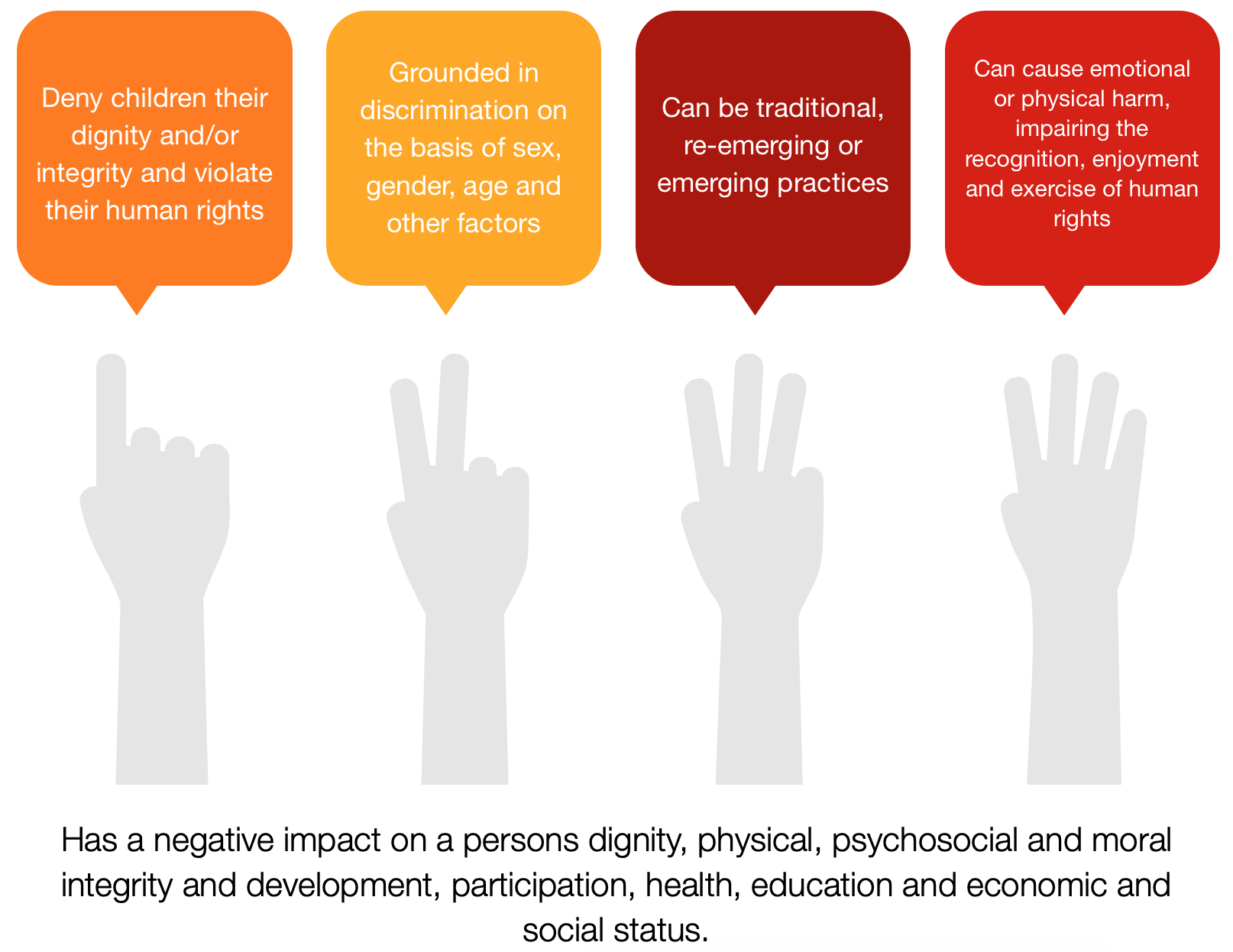What is a harmful practice?
Harmful practices are persistent practices and behaviours that are grounded on discrimination on the basis of sex, gender, age and other grounds as well as multiple and/or intersecting forms of discrimination that often involve violence and cause physical and/or psychological harm or suffering.
What causes harmful practices to emerge?
The causes of harmful practices are multidimensional and include stereotyped sex- and gender-based roles, the presumed superiority or inferiority of either of the sexes, attempts to exert control over the bodies and sexuality of women and girls, social inequalities and the prevalence of male-dominated power structures.
What are some examples of harmful practices?
There are many different harmful practices across the globe and below we have highlight some examples. You can click on the practice to read more.
Where have harmful practices been recorded globally?
The below map highlights some of the harmful practices that are prevalent in countries across the globe. There will be many practices that have not been researched and will not show on the map. Harmful practices can happen any where in the world as families move with these practices embedded in culture.
*Please note, prevalence of FGM, Breast Flattening and Child Abuse Linked to Faith or Belief are not recorded on this map.
View our FGM Prevalence Map, Breast Flattening and Child Abuse Linked to Faith or Belief Map.

